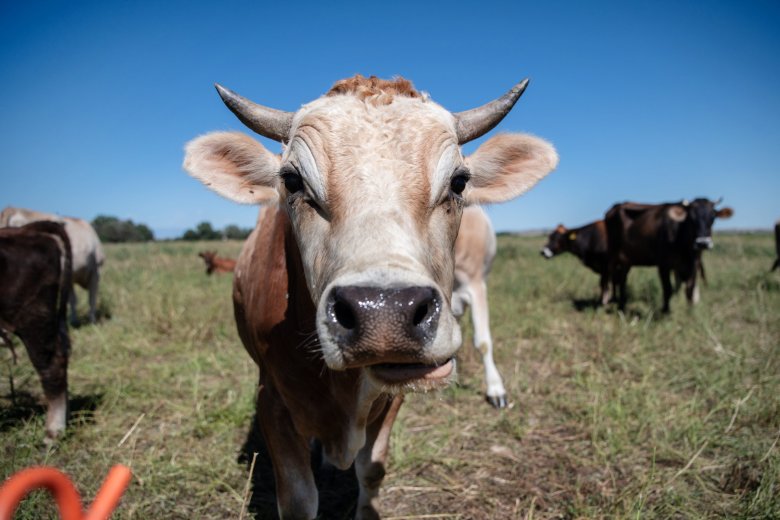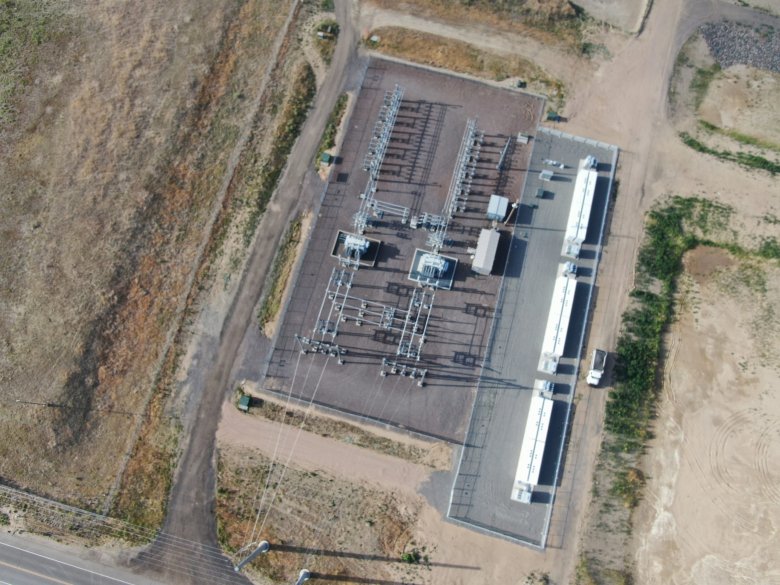Happy Wednesday, Colorado, and welcome to another edition of The Temperature, where today we are serving up an absolute feast of health and climate news.
But, first, we need to talk about heart health — specifically the kind of heart health you might have during, say, the closing moments of an extra-time win by the U.S. women’s soccer team over Germany in the semifinals of the Olympics.
You know, just minutes after Colorado’s own Mallory Swanson threaded a pass through the tiniest of needles to Colorado’s own Sophia Smith for what was apparently the game-winning goal, only for Germany to come back with a free header that almost certainly was going to tie the score, except that U.S. goalkeeper Alyssa Naeher (connections to Colorado unclear) somehow miraculously got her left heel on the ball while leaping in the air to keep it out and preserve the U.S.’s unlikely quest for gold and send my blood pressure to roughly 1,000,000/80. That kind of heart health.
(We joke, of course, but there is some evidence of cardiac events tied to watching sports.)
There’s really only one cure for stress like that, and it’s rest. So, go ahead and show this newsletter to your boss as proof that you need to take today off to give your heart a break ahead of Saturday’s gold medal match. The Temp says so.
Now, let’s make like we’re in the last 100 meters of a 1,500 and kick it into gear.
TEMP CHECK
HEALTH
The health system is stressing Coloradans the heck out

If you are freaked out about the cost of health care and worried about whether you’ll be able to afford it when you need it, then you have good company. According to a new study, nearly everyone else in Colorado feels the same.
In a survey of more than 1,400 Coloradans, 83% said they worry about affording health care in the future. The survey also found that 68% of people said they delayed needed health care or went without in the prior year due to cost concerns.
The survey was conducted by the Altarum Healthcare Value Hub, a national nonprofit that studies health care policy around costs and affordability. Among its other findings: Large, bipartisan majorities support the idea that the health care system needs to change to improve affordability and also support the government doing more to help control costs.
“Health care may be one of the very few things we can all agree on that needs to be worked on,” said Beth Beaudin-Seiler, the director of the Healthcare Value Hub.
The organization worked on the Colorado survey with the Colorado Consumer Health Initiative, a group that advocates for consumers and works on policies at the state Capitol that are often aligned with approaches favored by Democrats. But the survey is part of Altarum’s broader Consumer Healthcare Experience State Survey, which runs in numerous other states.
Beaudin-Seiler said Colorado’s results are similar to those seen across the country, highlighting how health care affordability is a nationwide problem that people are eager to see addressed. But Colorado has also been a leader in doing some of the things the survey suggests have broad public support — such as capping the out-of-pocket price of insulin.
Adam Fox, the Colorado Consumer Health Initiative’s deputy director, said that shows how one-off policy changes aren’t enough to fix the bigger problem.
“Colorado has made some important steps in the right direction, but the reality is health care costs continue to rise,” Fox said. “… It means that folks are continually challenged by health care affordability.”
Fox said CCHI has not yet decided on its policy priorities for next year’s legislative session — much, he said, hinges on the outcome of the presidential election and what that might mean for, say, the policies in the Affordable Care Act. But Priya Telang, CCHI’s communications manager, said the organization will use the information from the survey in helping to guide its policy proposals.
BIRD FLU
Searching for silent spread of bird flu

10
The number of human cases of bird flu reported in Colorado in 2024
Colorado hasn’t reported any new human cases of bird flu for a couple of weeks now, but that doesn’t mean the state isn’t looking.
The Colorado Department of Public Health and Environment has launched a new study to analyze blood samples from dairy workers who were exposed to sick cattle. The research, known as a seroprevalence study, is looking for antibodies against bird flu in the blood of workers who had not been known to have been infected.
If researchers find the antibodies, it would suggest that some workers had been infected without developing symptoms. And that would mean that bird flu could be silently spreading from animals to people.
According to an update from the federal Centers for Disease Control and Prevention, the Colorado study launched last week. It is unclear when initial results from the study will be available, and CDPHE did not respond with answers as of newsletter emailing time.
Just to provide some reassurance here: The existence of this study doesn’t mean health leaders think there is silent spread. A previous study looking at the blood of dairy workers in Michigan found no bird flu antibodies in workers who hadn’t been known to be infected. And, even if the Colorado study does find evidence of silent spread, there is still no evidence that the virus is spreading person-to-person.
Meanwhile, Colorado’s efforts to better track bird flu on commercial dairies is delivering results. The state has reported nine new cases of bird flu on dairies after discovering them through “bulk tank surveillance.” This is part of the state’s new order for mandatory testing of milk at commercial dairies to identify bird flu cases that weren’t being picked up by just watching for sick cows.
Colorado is now up to 63 dairies affected by bird flu, more than double that of any other state (though, of course, no other state has issued an order for testing at all dairies).
MORE HEALTH NEWS
CLIMATE
Colorado’s biggest new battery pack is soaking up a lot of sun

The Brighton-based United Power electric cooperative accelerated its innovative push into renewable and “hyper-local” energy supplies late last month, announcing the hookup of backup battery arrays across three counties.
The batteries at eight substations in Weld, Adams and Broomfield counties will store excess power from solar farms and other United Power transmission sources, then disperse the stored energy at peak times like summer’s late-afternoon air conditioning surge when families get home from work and school.
The batteries, which are aimed at providing about four hours of electricity at peak demand or during emergencies, are a key to United Power’s exit from the umbrella Tri-State Generation Association. The goal for United Power, which serves about 300,000 people from 112,000 meters on the northern Front Range, is to add more renewable generation to its grid and control smaller, local sources of power rather than rely on distant coal-fired plants.
The Tri-State exit, the growth in solar and other renewable contracts, and the far-flung battery array follow other United Power moves, including teaming up with Fort Lupton to seek a federal grant for a floating solar array at a containment pond. Fort Lupton wants better backup power sources for a water treatment plant, and tests have shown floating solar farms can block summer sun that produces harmful algae blooms.
Five of the new battery arrays were turned on in July, and the remaining three will be linked by the end of the summer, United Power said. One battery site takes down power sent by Xcel Energy transmission lines from a Whetstone Power solar farm in the San Luis Valley.
“We’re excited to be moving ahead with one of the most aggressive plans for such systems,” said United Power CEO Mark Gabriel. The 78.3MW of batteries are owned by United Power’s partner in the storage project, for-profit renewable energy developer Ameresco.

United Power says it is one of the fastest-growing co-ops in the nation, drawing on the rapid home and business growth from Broomfield to Weld County. It serves communities from Coal Creek and Golden Gate Canyons to Brighton, Hudson and Keenesburg on the plains.
Tri-State and United Power battled over how much the smaller co-op needed to pay to exit long-term power contracts with the parent utility. United Power is still contesting Tri-State’s latest requirement of $627 million, but has set aside enough to cover a final agreement, the co-op has said.
MORE CLIMATE NEWS
CHART OF THE WEEK

So, you may have heard that COVID infections are rising in Colorado due to new variants known as the FLiRTs.
The variants are descendants of the paterfamilias of most COVID viruses circling the world today, the omicron strain. They take their name from their pattern of mutations and for their ability to cozy up to you and then leave you devastated, heartbroken and lying in bed for several days. (Maybe, we don’t really know, we’re not virus-namers.)
Here’s the thing, though: No shade to the dirty FLiRTies, but we’ve seen this game before.
While a summer COVID wave is often seen as novel, the chart above shows that it’s not — at least not in Colorado. There were also small summer bumps in COVID hospitalizations in 2020, 2021 and 2022.
It’s also not uncommon in Colorado for infections to start their big annual surge in August before peaking consistently — at least so far — in late November, typically well before much of the rest of the nation sees a peak. It’s all part of the mysterious seasonal patterns for the virus that we still don’t really understand.
Anyway, just a reminder to be virus-aware out there and make sure that the FLiRTs’ love for you is unrequited.
Hey, here we are at the finish line. Only one thing to do now — dance like we’re Simone and Elmo.
You’re all gold medalists in our books, Temp family. Thanks for hanging with us.
— John & Michael

The Colorado Sun is part of The Trust Project. Read our policies.
Corrections & Clarifications
Notice something wrong? The Colorado Sun has an ethical responsibility to fix all factual errors. Request a correction by emailing corrections@coloradosun.com.




